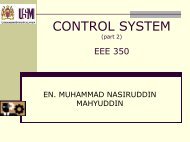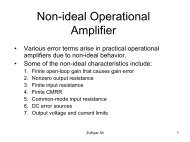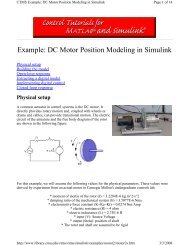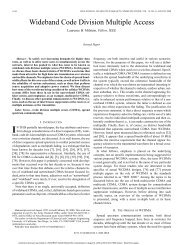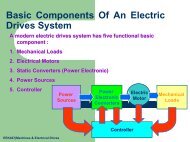Mobile robot kinematics
Mobile robot kinematics
Mobile robot kinematics
You also want an ePaper? Increase the reach of your titles
YUMPU automatically turns print PDFs into web optimized ePapers that Google loves.
Wheel kinematic constraint<br />
• The first step to a kinematic model of the<br />
<strong>robot</strong> is to express the constraints on the<br />
motions of individual wheels.<br />
• Under the assumption that wheel undergoes<br />
motion only under conditions of pure rolling<br />
and rotation about the vertical axis through<br />
the contact point, there are two constraints<br />
for every wheel type to be considered.
Wheel kinematic constraints<br />
• 1 st constraint<br />
-concept of rolling: wheel must roll when<br />
motion takes place in the appropriate<br />
direction<br />
• 2 nd constraint<br />
-concept of no lateral slippage: the wheel must<br />
not slide orthogonal to the wheel plane.
Wheel kinematic constraints<br />
• Types of wheels:-<br />
1. Fixed standard wheel<br />
2. Steered standard wheel<br />
3. Castor wheel<br />
4. Sweedish wheel<br />
5. Spherical wheel<br />
• There are two sets of kinematic constraints for each<br />
wheel type:<br />
i. Rolling constraint<br />
ii. Sliding constraint
<strong>Mobile</strong> <strong>robot</strong> maneuverability<br />
• Degree of mobility<br />
-<br />
• Degree of steerability<br />
• Degree of maneuverability<br />
• Three wheel configurations
<strong>Mobile</strong> Robot Workspace<br />
• Holonomic and nonholonomic<br />
• degrees of freedom







